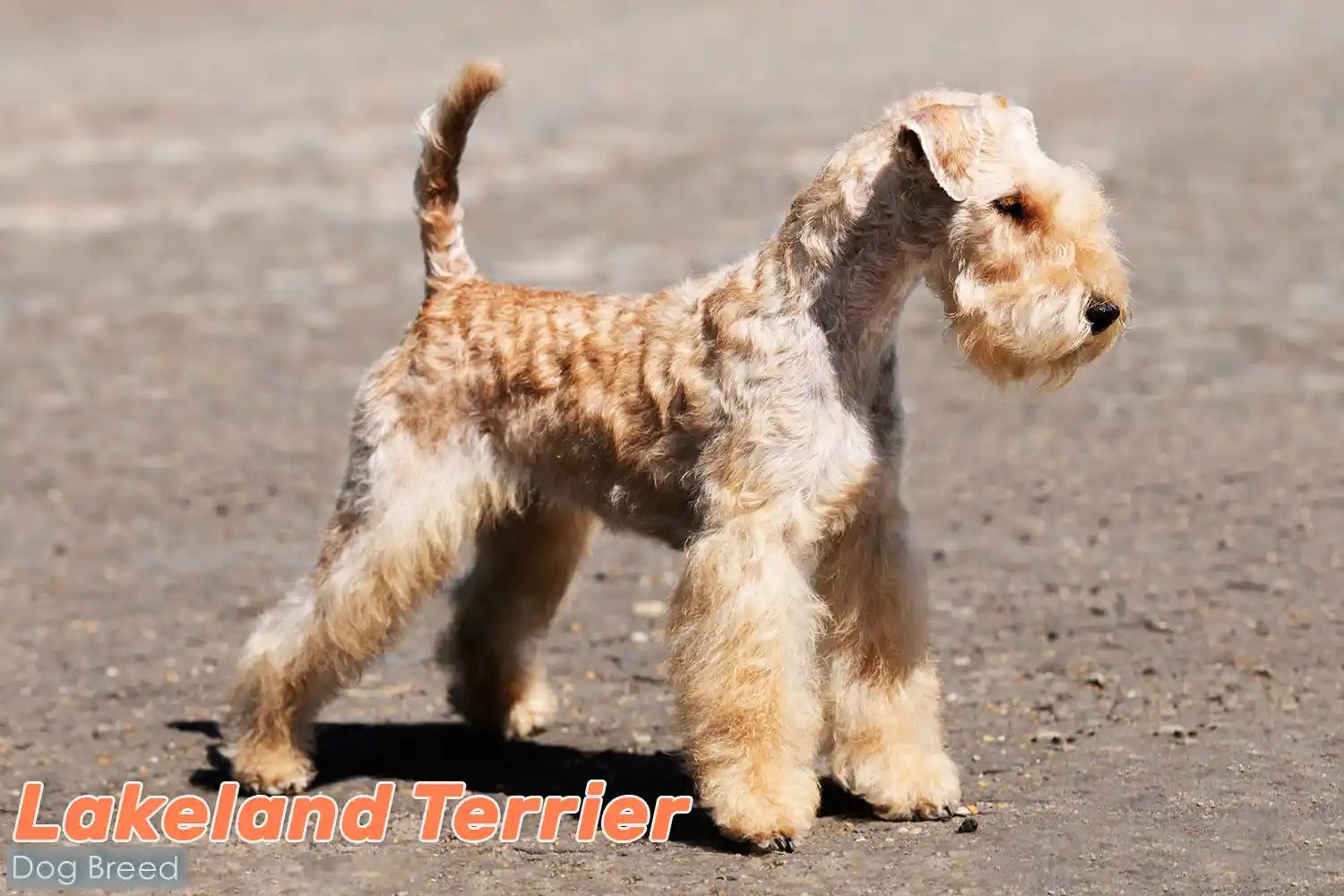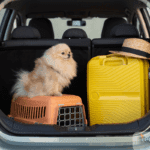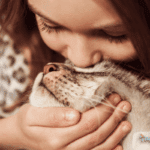Lakeland Terrier: Exploring This Intelligent, Bold Dog Breed
With their alert eyes, sturdy build, and fearless demeanor, Lakeland Terriers are much more than just a charming dog breed—they are spirited companions, ready for every adventure. Originating in England’s rugged Lake District, these energetic terriers were bred to tackle harsh terrains and hunt vermin, embodying resilience and determination.
Lakeland Terriers are ideal for active families or individuals who seek a loyal, playful, and highly intelligent companion. Whether hiking trails or snuggling on the couch after a long day, these dogs thrive in environments filled with engagement, structure, and love.
At Tailwaggors, we celebrate the unique bond between pets and their humans. This guide equips you with the knowledge to care for your Lakeland Terrier, ensuring a joyful, healthy partnership. Whether you’re considering this breed or already share your home with one, you’ll find everything you need here to keep your Terrier thriving.
Lakeland Terriers are celebrated for their sharp minds and lively personalities. Mastering our guide on “Essential Dog Training Commands” an bring out their best behavior and charm.
Quick Facts: Lakeland Terrier
Here’s a snapshot of the Lakeland Terrier traits to help you understand their unique qualities:
| Characteristic | Description | Rating |
|---|---|---|
| Size | Height: 13–15 in (33–38 cm); Weight: 15–17 lbs (6.8–7.7 kg) | ⭐⭐⭐⭐ |
| Average Lifespan | 12–15 years | ⭐⭐⭐⭐ |
| Exercise Requirements | High; needs 1–2 hours of physical activity daily | ⭐⭐⭐⭐⭐ |
| Grooming Needs | Moderate; regular brushing and hand-stripping recommended | ⭐⭐⭐⭐ |
| Trainability | High; thrives with consistent, positive reinforcement | ⭐⭐⭐⭐ |
| Compatibility with Children | Excellent; playful and tolerant with older children | ⭐⭐⭐⭐ |
| Energy Level | Very high; thrives on outdoor activities and mental challenges | ⭐⭐⭐⭐⭐ |
| Shedding Level | Low; hypoallergenic coat makes them a good option for allergy-sensitive households | ⭐⭐⭐⭐ |
| Health Issues | Prone to eye problems and joint issues; regular check-ups are essential | ⭐⭐⭐⭐ |
| Cost of Ownership | Moderate to High; includes grooming, quality food, and vet visits | ⭐⭐⭐⭐ |
- • Confident and Courageous: True to their terrier roots, Lakeland Terriers are bold and fearless, tackling challenges head-on with boundless energy.
- • Playful and Energetic: With an endless zest for life, these dogs are happiest when engaged in games, outdoor adventures, or mentally stimulating activities.
- • Independent Yet Loyal: While they exhibit a streak of independence, Lakeland Terriers form deep emotional bonds with their families, making them exceptional companions.
- • Low-Shedding Coat: Their wiry, hypoallergenic coat is easy to manage with weekly brushing and occasional hand-stripping, reducing allergens in the home.
- • Intelligent and Trainable: These terriers excel with consistent training that leverages their curiosity and sharp mind, though they benefit from an experienced owner.
- • Great for Families: With patience and playfulness, Lakeland Terriers are ideal for households with older children who match their energy and enthusiasm.

History and Origins of the Lakeland Terrier
The Lakeland Terrier’s history is as rugged and enduring as the landscapes of England’s Lake District, where the breed originated. Developed to protect livestock and hunt vermin, these agile and fearless terriers quickly earned their reputation as indispensable working dogs. Their compact size, weather-resistant coat, and unyielding determination allowed them to excel in the harsh conditions of the Lake District, creating a legacy of resilience and loyalty.
Quick Facts About Lakeland Terrier Origins
| Aspect | Detail |
|---|---|
| Geographic Origin | Lake District, England |
| Purpose | Hunting foxes and protecting livestock |
| First Recognition | Recognized by The Kennel Club in 1928 |
| Introduction to the U.S. | 20th century; became a popular show and family dog |
| Notable Contributions | Terrier work, dog shows, and loyal family companions |
| Breed Development | Refined from working terrier breeds like the Fell Terrier and Bedlington Terrier |
Lakeland Terrier Development in England
In England during the Middle Ages, hunters sought a compact yet sturdy dog with an unparalleled In the Lake District, where steep hills and rough terrain defined daily life, farmers needed a dog that could endure challenging environments while protecting their livestock. Early Lakeland Terriers were bred to chase foxes into their dens, combining bravery with tenacity.
The 18th and 19th centuries saw purposeful refinement of the breed’s traits:
- Stamina and Agility: Crossing with Fell Terriers and Bedlington Terriers created a breed that could traverse rugged landscapes with ease.
- Independence: Farmers valued a dog that could work alone and make quick decisions in the field.
- Low-Shedding, Weather-Resistant Coat: Selective breeding ensured a coat suited to damp, cold conditions while remaining manageable for owners.
By the early 20th century, these working dogs began to transition into homes and show rings, celebrated for their intelligence, charm, and distinctive appearance.
From Hunting Fields to Family Homes
While bred for rugged tasks, Lakeland Terriers soon proved their adaptability as loyal family companions. Their high energy and spirited personality endeared them to households across England and, eventually, the world.
The breed gained formal recognition by The Kennel Club in 1928 and was introduced to the U.S. soon after. Today, Lakeland Terriers are treasured for their versatility—excelling in agility trials, dog shows, and as affectionate companions.
A Breed of Many Talents
From their hunting roots to their modern roles, Lakeland Terriers continue to impress with their intelligence and versatility. Beyond their work as hunters, they shine in:
- Agility Competitions: Their quick reflexes and eagerness to learn make them natural athletes.
- Family Life: Their affectionate nature and playful energy make them great additions to active households.
- Therapy and Companionship: Their loyalty and charm bring joy to those they meet.
Recognition and Global Popularity
Recognized by The Kennel Club in 1928 and the American Kennel Club (AKC) in 1934, the Lakeland Terrier has maintained a devoted following. While less common than other terrier breeds, their unique combination of independence, intelligence, and loyalty ensures they remain a favorite among dog enthusiasts.
Why the Lakeland Terrier Stands Out
From the rugged fields of England to family homes worldwide, the Lakeland Terrier’s journey reflects adaptability and purpose. Their ability to thrive in diverse roles, from determined hunter to loving companion, highlights their exceptional traits. Few breeds blend intelligence, courage, and charm as seamlessly as the Lakeland Terrier.
Before welcoming a Lakeland Terrier into your home, check out our “10 Essential factors for bringing a new pet home” for essential preparation tips.
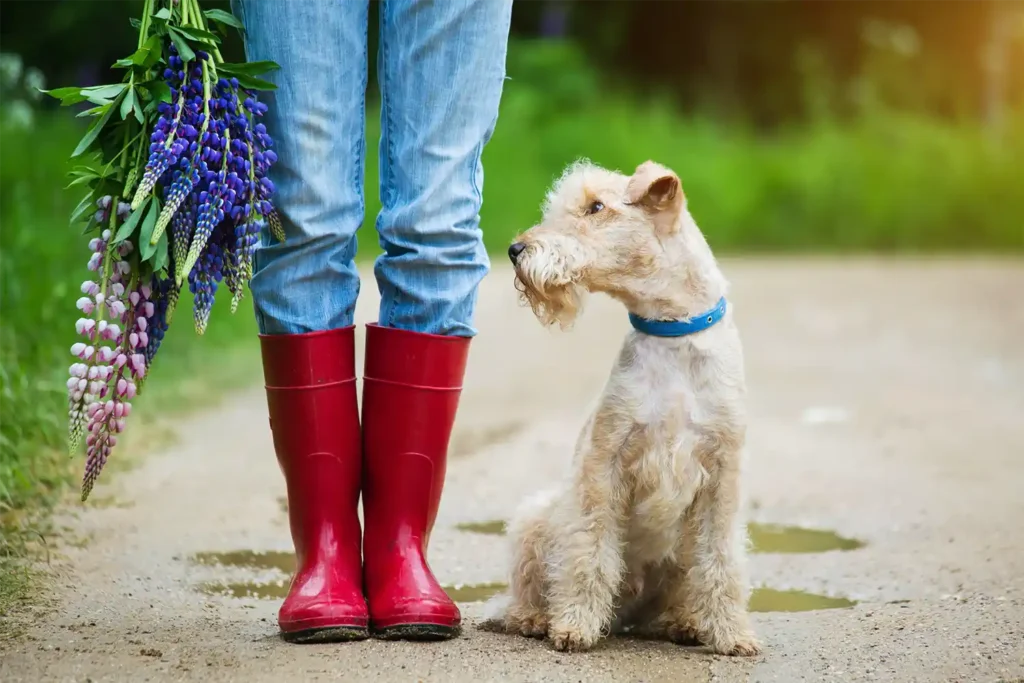
Personality Traits of the Lakeland Terrier
The Lakeland Terrier is a bold, energetic, and intelligent breed, perfectly suited for active individuals and families. Their playful spirit and affectionate nature make them a delight to own, while their confident and determined demeanor reflects their working-dog heritage. These terriers thrive in environments where they can explore, engage, and connect with their humans.
Table: Lakeland Terrier Personality Profile
| Trait | Description |
|---|---|
| Intelligence | Clever and resourceful, especially when motivated by scent or treats |
| Energy Level | High energy; thrives with daily exercise and interactive play |
| Social Interaction | Highly affectionate; bonds deeply with family members and enjoys being part of a pack |
| Protectiveness | Friendly to all; will alert the family but not overly protective |
| Trainability | Moderate; responds best to consistent, positive reinforcement |
| Compatibility with Kids | Excellent; patient and playful, making them ideal for children |
| Compatibility with Pets | Very sociable; thrives in multi-pet households with proper introductions |
Loyal and Affectionate Companions
Lakeland Terriers are deeply loyal, forming strong bonds with their families. They crave inclusion in daily activities and love being part of a tight-knit family. While their independence is notable, their devotion to their loved ones is unwavering, making them a cherished companion.
Real-Life Example: Lakeland Terrier owners frequently share touching stories of their dogs following them around the house or sitting patiently by the door until their favorite humans return.
Energetic and Playful
Brimming with energy, Lakeland Terriers are happiest in homes where they can engage in regular physical and mental activities. Without sufficient outlets for their energy, they may become bored and resort to chewing or digging. Their natural enthusiasm makes them a joy to have in active households.
🐾 Tailwaggors Tip: Plan activities like long hikes, agility courses, or scent-tracking games to keep your Lakeland Terrier engaged. These exercises not only curb destructive tendencies but also strengthen your bond.
Intelligent and Independent
Lakeland Terriers are exceptionally intelligent, which makes training both rewarding and challenging. Their sharp minds allow them to quickly master commands and problem-solving tasks, but their independent nature requires patience and consistency from owners.
🐶 Pro Tip: Incorporate puzzle toys or hide-and-seek games during training sessions to harness their problem-solving abilities while keeping them entertained.
Real-Life Example: Many Lakeland Terriers excel in dog sports like agility and scent work, where their intelligence and determination are on full display.
Friendly Yet Reserved
Lakeland Terriers are affectionate with their families but can be reserved around strangers. This natural confidence and alertness make them excellent watchdogs. Early socialization helps them grow into well-rounded adults who balance friendliness with cautiousness.
🐶 Key Insight: Introduce your Lakeland Terrier to different people, environments, and animals during their puppy years to encourage a balanced personality.
Real-Life Example: Families often describe their Lakeland Terrier as a “gentle protector” who is playful at home but keeps a watchful eye on new visitors.
Emotionally Sensitive Yet Fearless
Lakeland Terriers possess a unique blend of emotional sensitivity and courage. They are highly attuned to their owners’ moods, offering comfort during tough times. At the same time, their bold nature ensures they tackle challenges head-on, embodying a “small dog with a big heart” attitude.
🐶 Fun Fact: The Lakeland Terrier’s cheerful expressions and tail-wagging enthusiasm have earned them a reputation as a dog that brightens every room they enter.
Real-Life Example: Many owners share stories of their Lakeland Terrier instinctively comforting them during illness or stress while remaining playful and spirited in everyday life.
Why Choose a Lakeland Terrier?
Lakeland Terriers combine intelligence, energy, and affection, making them ideal for active individuals and families. Their outgoing yet independent nature suits homes that offer structure, engagement, and plenty of love. With proper care, these spirited companions will bring years of joy and adventure to your life.
Lakeland Terriers are eager to please. Mastering “Essential Dog Training Commands” can help bring out their full potential.
🐾 Tailwaggors Tip: Balance your Lakeland Terrier’s high energy levels with physical exercise and mental stimulation. Activities like scent work and obedience training not only keep them entertained but also strengthen your bond.
Lakeland Terriers thrive in active households with consistent routines. Provide early socialization to prevent anxiety, and monitor their diet to maintain a healthy weight. Regular vet visits and mental stimulation are key to their long-term well-being,” advises Dr. Esther Knoetze, BSc, BVSc.
Lakeland Terriers thrive on companionship but can develop separation anxiety. Learn more about “Understanding and Managing separation anxiety in dogs”.
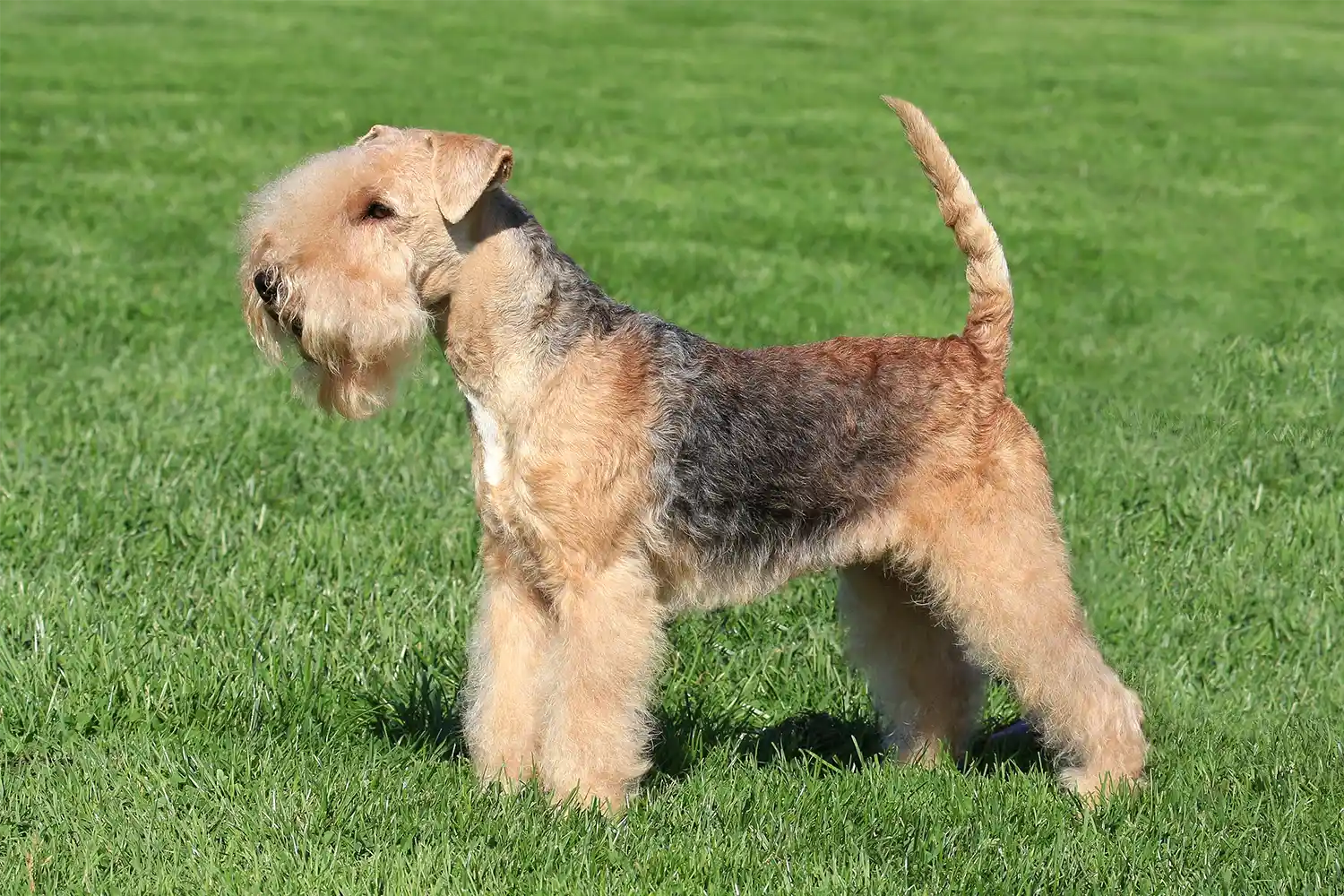
Physical Characteristics of the Lakeland Terrier
The Lakeland Terrier is a compact, energetic breed designed for agility and endurance. With a wiry coat and expressive features, this breed exudes charm and functionality. Originally bred to navigate the rugged terrain of England’s Lake District, their physical traits reflect their history as resilient working dogs.
Size and Build
| Trait | Description |
|---|---|
| Average Height | 13–15 in (33–38 cm) |
| Average Weight | 15–17 lbs (6.8–7.7 kg) |
| Body Type | Compact, muscular, and agile, designed for endurance and adaptability |
The Lakeland Terrier’s sturdy build and manageable size make them ideal for both outdoor adventures and indoor living. Their strong legs and balanced frame provide the agility needed for activities like hiking or agility courses.
Real-Life Example: Owners often marvel at their Lakeland Terrier’s ability to keep up on long hikes, showcasing endurance far beyond their small size.
Notable Features
The Lakeland Terrier’s unique features combine practicality with undeniable charm:
- Eyes: Dark, expressive, and full of intelligence and curiosity.
- Ears: V-shaped and folded forward, enhancing their alert and focused appearance.
- Muzzle: Moderately long and strong, ideal for their working-dog tasks.
- Tail: High-set and upright, reflecting their confident and lively demeanor.
Their purposeful gait and poised movement emphasize their heritage as tireless terriers, ready for adventure at any moment.
Coat and Colors
| Trait | Description |
|---|---|
| Coat Type | Double-layered, wiry, and weather-resistant, protecting them in harsh conditions. |
| Coloring | Includes black, blue, liver, red, and wheaten, often with saddle markings for added distinction. |
The Lakeland Terrier’s coat is more than just low-shedding; it’s a hallmark of their breed. Designed to resist weather and dirt, their wiry coat is functional for outdoor work while requiring regular maintenance to keep its texture. Weekly brushing and occasional hand-stripping or clipping are essential to prevent matting and maintain their iconic appearance.
Real-Life Example: Lakeland Terrier owners appreciate their dogs’ low-shedding coat, but they emphasize the importance of professional grooming every few months to preserve the coat’s unique texture.
Facial Features and Posture
| Feature | Description |
|---|---|
| Eyes | Dark and oval, radiating intelligence and curiosity. |
| Ears | V-shaped and folded, complementing their sharp and alert expression. |
| Tail | High-set and upright, a cheerful indicator of their confidence and enthusiasm. |
The Lakeland Terrier’s expressive eyes and upright posture highlight their vibrant personality. Whether bounding across fields or greeting family at the door, their physical traits capture their lively and endearing nature.
Key Physical Traits of the Lakeland TErrier
- Compact Build: A muscular, agile frame built for endurance and adaptability.
- Distinctive Coat: Weather-resistant and low-shedding, their wiry coat requires regular upkeep.
- Expressive Features: Their bright eyes and lively posture reflect their energetic and bold spirit.
- Variety of Colors: Their unique coloring options ensure every Lakeland Terrier is one-of-a-kind.
Why Understanding These Characteristics Matters
By understanding the physical traits of the Lakeland Terrier, owners can provide the care they need to thrive. Regular grooming, proper exercise, and attention to their compact yet sturdy build ensure they remain healthy, happy, and ready for adventure.
🐾 Tailwaggors Tip:
Brush your Lakeland Terrier weekly to maintain their coat’s texture and reduce shedding. Schedule professional grooming every few months to keep their wiry coat in peak condition.
Lakeland Terriers’ coats are designed for durability but require consistent care. Regular brushing prevents matting, while professional grooming helps maintain their wiry texture. Monitor their skin for irritation and clean their ears regularly to prevent infections,” advises Dr. Esther Knoetze, BSc, BVSc.
Why the Lakeland Terrier Stands Out
The Lakeland Terrier’s physical traits are a blend of practicality and charm. Their compact size, expressive features, and low-maintenance coat make them a versatile choice for active families. Whether exploring the outdoors or lounging at home, their unique characteristics ensure they stand out as a breed of enduring appeal.
Did you know that some Lakeland Terriers love sticking out their tongues? Find out other reasons why in this vet-reviewed guide.
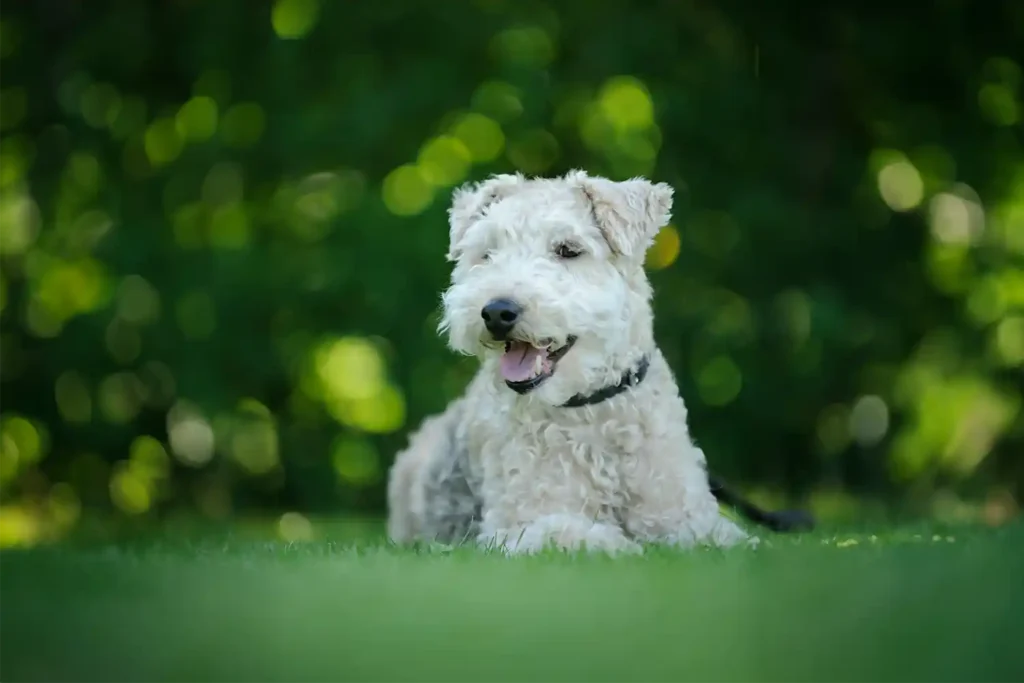
Health and Lifespan of the Lakeland Terrier
Lakeland Terriers are celebrated for their resilience and energetic personalities. With proper care and attention, these spirited dogs can live 12 to 15 healthy years. Understanding their specific health needs and taking preventive measures will ensure your Lakeland Terrier thrives as a happy and active companion.
Average Lifespan of Lakeland Terrier
The average lifespan of a Lakeland Terrier is 12 to 15 years. This impressive longevity reflects their robust health and sturdy build, but genetics, nutrition, and regular veterinary care significantly influence their overall lifespan.
🐾 Tailwaggors Tip:
A balanced lifestyle with portion-controlled meals, daily exercise, and routine checkups can help your Lakeland Terrier live their longest, healthiest life.
Common Health Issues in Lakeland Terrier
Although generally healthy, Lakeland Terriers are predisposed to a few hereditary and lifestyle-related conditions. Proactive management is crucial to address these issues early.
| Condition | Description |
|---|---|
| Lens Luxation | A genetic eye disorder where the lens detaches, potentially leading to vision impairment or loss. |
| Patellar Luxation | Dislocation of the kneecap, causing intermittent limping or discomfort. |
| Skin Allergies | Reactions to environmental allergens or specific foods, resulting in itching or redness. |
| Periodontal Disease | Gum and tooth infections caused by tartar buildup, common in small breeds. |
| Hypothyroidism | A hormonal imbalance that leads to weight gain, lethargy, and thinning coats. |
Lakeland Terriers are prone to lens luxation and patellar luxation, both of which can be managed with early diagnosis and appropriate care. Routine checkups are essential for monitoring these conditions,” advises Dr. Esther Knoetze, BSc, BVSc.
Preventive Care and Regular Vet Checkups
Proactive care is essential to maintain your Lakeland Terrier’s health. Regular grooming, a nutritious diet, and a consistent exercise routine are critical components of their well-being.
| Health Aspect | Recommended Action | Frequency |
|---|---|---|
| Weight Management | Provide a high-quality diet and monitor portion sizes. Encourage daily exercise. | Weekly monitoring |
| Eye Health | Check for redness, cloudiness, or discharge; consult a vet if issues arise. | Annually or as needed |
| Joint Health | Use ramps for mobility and provide joint supplements as recommended by a vet. | Annually or as needed |
| Skin Care | Watch for irritation and use hypoallergenic products as needed. | As needed |
| Dental Care | Brush teeth and provide dental chews to prevent gum disease. | Weekly; annual cleaning |
Signs of Illness to Watch For in Lakeland Terrier
Stay vigilant for subtle changes in behavior or appearance to catch health issues early.
- Eye Changes: Redness or cloudiness may indicate lens luxation or infection.
- Limping or Stiffness: Potential signs of joint issues like patellar luxation.
- Skin Irritation: Persistent itching or redness could signal allergies or infections.
- Weight Changes: Sudden gain or loss might indicate thyroid issues or dietary problems.
- Bad Breath or Tooth Loss: Indicators of periodontal disease that require attention.
Some owners explore options like “CBD oil for dogs” to manage joint discomfort.
🐾 Tailwaggors Tip:
Regular grooming and observation during playtime or walks help you detect health issues early, ensuring prompt treatment.
Lakeland Terrier may face certain health challenges. Stay informed about the “11 Warning signs your dog needs a vet visit”.
Ensuring a Healthy Life for Your Lakeland Terrier
Lakeland Terriers thrive when their physical and mental needs are met. With the right care, they remain active and healthy companions.
Key Areas of Care:
- Balanced Nutrition: Feed a diet tailored to their size and activity level.
- Daily Exercise: At least one hour of physical activity daily, including walks or agility play.
- Routine Grooming: Weekly brushing and ear cleaning to prevent infections.
- Veterinary Screenings: Annual checkups to monitor eyes, joints, and overall health.
🐾 Tailwaggors Tip:
Combine daily walks with mentally enriching activities like puzzle toys or scent-tracking games. These activities engage both their bodies and minds, keeping them content and healthy.
Lakeland Terriers benefit from a structured lifestyle with consistent exercise and proper diet. Early detection of joint or eye issues through routine checkups can significantly enhance their quality of life,” recommends Dr. Esther Knoetze, BSc, BVSc.
Why Health Awareness Matters
By understanding and addressing the health needs of Lakeland Terriers, owners can ensure their dogs enjoy long, fulfilling lives. Preventive care, regular veterinary visits, and a balanced routine are the keys to a thriving Lakeland Terrier.

Caring for an Lakeland Terrier: Grooming, Diet and Enrichment Tips
Lakeland Terriers are spirited and intelligent companions who thrive when their physical, mental, and emotional needs are met. With proper grooming, a nutrient-rich diet, and engaging activities, you can help your Lakeland Terrier live a happy and well-balanced life. Understanding their unique care requirements is key to fostering a strong bond and keeping them at their best.
Table: Care Requirements for Lakeland Terrier
| Care Aspect | Requirement Level | Frequency | Details | Importance Rating |
|---|---|---|---|---|
| Grooming | High | Weekly | Regular brushing, hand-stripping, ear cleaning, and nail trimming. | ⭐⭐⭐⭐⭐ |
| Feeding | High | Daily | Balanced meals with portion control tailored to their activity level. | ⭐⭐⭐⭐⭐ |
| Exercise | Very High | Daily | At least 1 hour of physical activity and mental stimulation. | ⭐⭐⭐⭐⭐ |
| Mental Stimulation | Very High | Continuous | Puzzle toys, training, and interactive play to engage their sharp minds. | ⭐⭐⭐⭐⭐ |
| Environment | High | Continuous | Secure outdoor spaces and cozy indoor areas with engaging enrichment activities. | ⭐⭐⭐⭐ |
Grooming: Keeping Your Lakeland Terrier Clean and Comfortable
The Lakeland Terrier’s wiry, weather-resistant coat requires regular maintenance to keep it looking and feeling its best. Grooming not only enhances their appearance but also supports their health and well-being.
Key Grooming Practices:
- Brushing: Use a slicker brush weekly to remove loose hair and prevent tangles.
- Hand-Stripping: Maintain their wiry coat’s texture with professional hand-stripping every 2–3 months.
- Ear Care: Clean ears weekly with a vet-approved solution to prevent moisture buildup and infections.
- Nail Trimming: Trim nails every 3–4 weeks to prevent overgrowth and discomfort.
- Bathing: Bathe monthly with a gentle, hypoallergenic shampoo to keep their coat clean without stripping natural oils.
- Dental Hygiene: Brush teeth 2–3 times a week and provide dental chews to reduce plaque buildup.
🐾 Tailwaggors Tip:
Start grooming routines early to help your Lakeland Terrier get accustomed to brushing, nail trims, and ear cleaning. Use positive reinforcement to turn grooming into a bonding activity.
Diet and Nutrition: Fueling Their Energy and Vitality
Lakeland Terriers are active dogs that require a nutrient-rich diet to support their energy levels and overall health. Proper portion control is essential, as overfeeding can lead to weight-related issues.
Key Nutritional Needs:
- High-Quality Protein: Opt for dog food with real meat or fish as the first ingredient to support muscle development.
- Healthy Fats: Omega-3 and Omega-6 fatty acids from fish oil or flaxseed promote a healthy coat and skin.
- Controlled Portions: Measure meals to prevent overfeeding and obesity.
Feeding Schedule:
- Adults: Two meals per day, adjusted for weight, age, and activity level.
- Puppies: Feed 3–4 smaller meals daily to support growth and development.
🐾 Tailwaggors Tip:
Add variety with dog-safe human foods like carrots, green beans, or blueberries as treats. Avoid toxic foods such as chocolate, grapes, and onions.
Read more on “10 Things to Consider Before Bringing a New Pet Home”
Hydration
Always provide fresh water, especially after exercise or during warm weather. Active dogs like Lakeland Terriers require consistent hydration to stay healthy.
Exercise: Meeting Their Physical and Mental Needs
Lakeland Terriers are highly energetic and thrive on consistent physical and mental stimulation. Without sufficient outlets for their energy, they may develop destructive behaviors like digging or excessive barking.
Physical Activity Recommendations:
- Daily Exercise: Provide at least 1 hour of activity, including walks, hikes, or games of fetch.
- Agility Training: Engage their intelligence and agility through structured courses or activities.
- Low-Impact Options: Swimming is a great alternative for joint-friendly exercise.
Mental Stimulation:
- Puzzle Toys: Use treat-dispensing toys to challenge their problem-solving skills.
- Training Sessions: Practice commands and tricks using positive reinforcement to keep their minds sharp.
- Interactive Play: Games like hide-and-seek or scent-tracking mimic their natural instincts.
🐾 Tailwaggors Tip:
Rotate activities to keep your Lakeland Terrier engaged and prevent boredom. A mix of physical exercise and mental challenges is key to a happy and balanced dog.
Interactive toys and training sessions are some of the “9 Simple ways to make your dogs happy”.
Creating a Comfortable Environment
Lakeland Terriers are social dogs who thrive in environments that cater to their emotional and physical needs.
Home Environment:
- Indoors: Provide a cozy resting area with soft bedding. Crates can serve as safe spaces for relaxation or travel.
- Outdoors: Ensure a secure, fenced yard for safe exploration. Include enrichment options like digging boxes or obstacle courses.
Temperature Awareness:
- Hot Weather: Offer shade, fresh water, and limit activity during peak heat.
- Cold Weather: Provide a warm resting area during freezing conditions, as their wiry coat offers limited insulation.
Lakeland Terriers thrive with consistent routines that address their physical and mental needs. Regular exercise, a balanced diet, and grooming prevent common issues like obesity and skin problems,” advises Dr. Esther Knoetze, BSc, BVSc.
Why Proper Care Matters
Lakeland Terriers are loyal, intelligent companions who flourish with attentive care. By focusing on grooming, nutrition, exercise, and enrichment, you can help your dog live a joyful, healthy, and well-balanced life.
🐾 Tailwaggors Tip:
Dedicate time each day to bond with your Lakeland Terrier through activities like play, training, or exercise. The effort you invest in their care will be returned with endless affection and companionship.
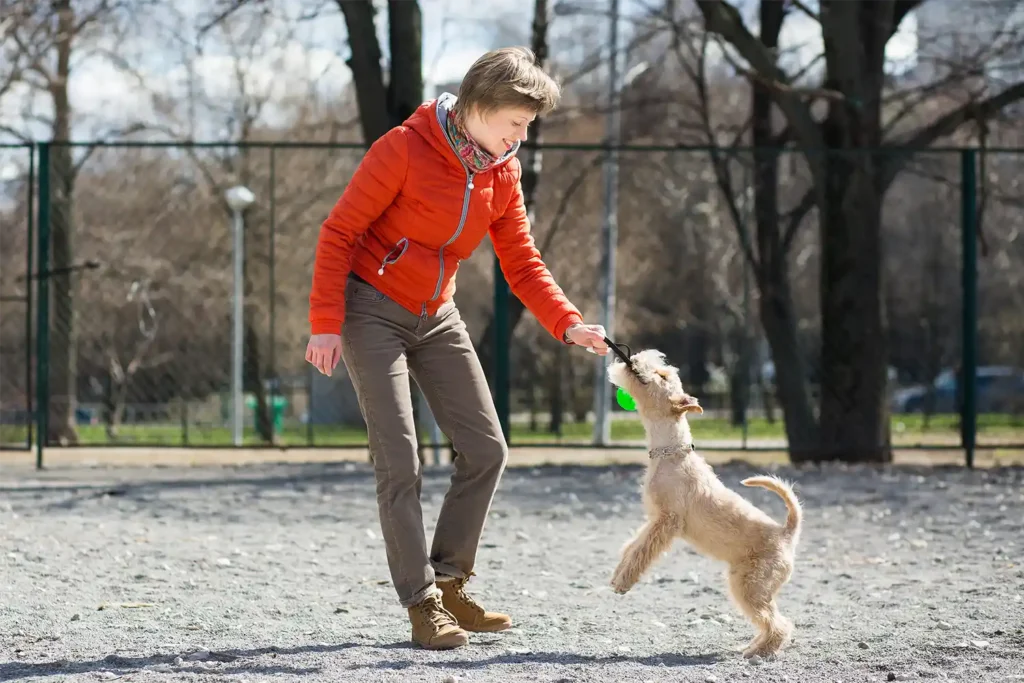
Owning an Lakeland Terrier: Budgeting and Financial Insights
Bringing a Lakeland Terrier into your family is an exciting journey, but it’s essential to understand the financial commitments involved. Proper budgeting ensures your dog receives the best care, allowing you to focus on building a rewarding relationship with your energetic companion.
Table: Cost Breakdown Analysis for Lakeland Terrier
| Expense Category | Initial Cost (USD) | Annual Cost (USD) | Value Rating |
|---|---|---|---|
| Adoption or Breeder Fees | $800–$2,800 | N/A | ⭐⭐⭐⭐⭐ |
| Food and Treats | N/A | $400–$1,000 | ⭐⭐⭐⭐⭐ |
| Grooming | $50–$100 | $200–$500 | ⭐⭐⭐⭐ |
| Veterinary Care | $150–$500 | $400–$1,200 | ⭐⭐⭐⭐⭐ |
| Pet Insurance | N/A | $360–$840 | ⭐⭐⭐⭐ |
| Toys and Enrichment | $30–$70 | $100–$300 | ⭐⭐⭐⭐ |
| Training Classes | $100–$300 (optional) | Optional | ⭐⭐⭐⭐ |
| Emergency Care | $200–$5,000+ | N/A | ⭐⭐⭐⭐ |
Initial Costs: Preparing for Your Lakeland Terrier
Adoption vs. Breeder Fees
- Adoption Fees ($100–$500): Adopting from a rescue or shelter is a cost-effective and ethical choice. Many shelters include vaccinations, microchipping, and spaying/neutering in their adoption fees.
- Breeder Fees ($800–$2,800): Purchasing from a reputable breeder ensures health-tested puppies with a strong lineage. While more expensive, this option provides peace of mind regarding the dog’s genetic history.
Essential Supplies for Day One
To make your Lakeland Terrier feel at home, prepare with these essentials:
| Item | Cost Range (USD) |
|---|---|
| Dog Crate | $50–$120 |
| Food and Water Bowls | $15–$30 |
| Leash and Collar | $20–$50 |
| Bed | $40–$80 |
| Toys | $30–$70 |
| Grooming Supplies | $20–$50 |
| Training Tools | $30–$60 |
Estimated Setup Cost: $200–$500
🐾 Tailwaggors Tip:
Invest in durable supplies like sturdy crates and chew-resistant leashes. These items may cost more upfront but last longer, saving you money in the long run.
Ongoing Annual Costs
Food and Treats
Lakeland Terriers are active dogs that require high-quality, nutrient-dense food to support their energy levels.
| Food Type | Annual Cost Range (USD) |
|---|---|
| Dry Food | $400–$800 |
| Specialty/High-Protein Diets | $600–$1,000 |
🐾 Tailwaggors Tip:
Add variety with dog-safe vegetables like carrots or green beans to provide extra nutrients and keep meals exciting. Monitor portion sizes to prevent overfeeding.
Veterinary Care
Routine vet visits are essential to monitor your Lakeland Terrier’s health and catch potential issues early.
| Category | Annual Cost Range (USD) |
|---|---|
| Wellness Exams | $150–$300 |
| Vaccinations | $50–$100 |
| Flea, Tick, and Worm Prevention | $200–$400 |
| Dental Cleaning (every 1–2 years) | $200–$600 |
Lakeland Terriers require regular dental cleanings and joint monitoring as part of preventive care. Early detection of health issues ensures they remain happy and active,” advises Dr. Esther Knoetze, BSc, BVSc.
Grooming
The Lakeland Terrier’s wiry coat needs consistent grooming to maintain its texture and health.
| Type | Annual Cost Range (USD) |
|---|---|
| Professional Grooming | $200–$500 |
| At-Home Grooming Supplies | $30–$70 |
🐾 Tailwaggors Tip:
Regular brushing minimizes matting and reduces the need for professional grooming. Learn to hand-strip your Lakeland Terrier’s coat for optimal maintenance.
Training and Enrichment
Lakeland Terriers thrive on mental stimulation and benefit from engaging activities and training sessions.
| Expense | Annual Cost Range (USD) |
|---|---|
| Training Classes | $100–$300 (optional) |
| Toys and Enrichment | $150–$300 |
🐾 Tailwaggors Tip:
Incorporate scent-tracking games and puzzle toys to engage your Lakeland Terrier’s sharp mind. Rotate toys to keep playtime exciting.
Hidden and Emergency Costs
- Emergency Vet Visits: $200–$5,000+ for surgeries, diagnostics, or critical care.
- Pet Boarding or Sitting: $25–$50 per day during travel.
- Prescription Diets: $300–$600 annually for specific health conditions.
🐾 Tailwaggors Tip:
Consider pet insurance to offset unexpected costs. Plans range from $360–$840 annually and offer peace of mind for emergencies.
Unexpected costs can arise. Prepare with this “Comprehensive Emergency guide for dog owners”.
Cost-Saving Strategies for Lakeland Terrier Owners
- Buy in Bulk: Save on food and supplies by purchasing larger quantities during sales.
- Preventive Healthcare: Regular checkups catch minor issues early, avoiding costly treatments.
- DIY Grooming: Learn to brush, trim nails, and clean ears at home to reduce professional grooming expenses.
- Invest in Quality Supplies: Durable items like beds, crates, and leashes last longer, reducing replacement costs.
Is Owning a Lakeland Terrier Worth the Investment?
Owning a Lakeland Terrier is a financial commitment, but the rewards far outweigh the costs. These energetic and intelligent dogs bring endless joy, loyalty, and companionship to their families. With thoughtful planning and budgeting, you’ll ensure your Lakeland Terrier lives a healthy and happy life.
Understanding “10 things to consider before bringing a new pet home” can help prepare for the costs of owning a Lakeland Terrier.
🐾 Tailwaggors Tip:
Owning a Lakeland Terrier isn’t just an expense—it’s an investment in a loving and loyal family member. Proper planning ensures a strong bond and countless cherished memories.
Lakeland Terriers thrive with attentive care, which includes regular exercise, balanced nutrition, and preventive healthcare. A well-cared-for terrier is a joy to own,” says Dr. Esther Knoetze, BSc, BVSc.
Disclaimer:
The cost estimates provided in the “Lakeland Terrier Dog: Budgeting and Financial Insights” section are general approximations based on current market trends and commonly reported expenses in the United States. Actual costs may vary depending on factors such as location, individual pet needs, specific health conditions, and lifestyle choices.
These estimates are intended for informational purposes only and should not replace personal research or consultations with veterinary or pet care professionals. We recommend setting aside additional funds for unexpected expenses, including emergency veterinary care and specialized dietary or training needs, to ensure your Alaskan Malamute receives the best possible care.
Always consult with a veterinarian or trusted breeder for detailed guidance tailored to your specific situation. Tailwaggors is not responsible for discrepancies or unforeseen costs that may arise.
Breed Comparison: Lakeland Terrier vs. Other Popular Breeds
Choosing the right breed requires evaluating factors like size, temperament, energy levels, and care requirements. Lakeland Terriers, with their bold personalities, compact size, and low-shedding coats, are often compared to Welsh Terriers, Fox Terriers, and Border Terriers. This guide will help you determine which breed aligns best with your lifestyle.
Table: How Does the Lakeland Terrier Compare?
| Aspect | Lakeland Terrier | Welsh Terrier | Fox Terrier | Border Terrier |
|---|---|---|---|---|
| Size | Small (15–17 lbs / 6.8–7.7 kg) | Small (20–22 lbs / 9–10 kg) | Small (15–18 lbs / 6.8–8.2 kg) | Small (11–15 lbs / 5–7 kg) |
| Coat | Wiry, weather-resistant, low-shed | Wiry, weather-resistant, low-shed | Smooth or wire, low-shed | Coarse, dense, weather-resistant |
| Personality | Confident, playful, loyal | Friendly, outgoing, independent | Energetic, alert, adventurous | Affectionate, adaptable, friendly |
| Grooming Needs | Moderate (hand-stripping required) | Moderate (regular brushing needed) | Moderate to high (depends on coat) | Low to moderate (easy maintenance) |
| Energy Level | Very high; thrives on activity | High; enjoys structured play | Very high; requires constant activity | High; enjoys walks and play |
| Trainability | High; responds to consistency | Moderate; can be stubborn | High; thrives on challenges | Moderate; eager to please |
| Compatibility with Pets | Good; needs early socialization | Good; may show dominance | Good; needs early socialization | Excellent; highly sociable |
Lakeland Terrier vs. Welsch Terrier
Both breeds share wiry coats and energetic personalities but differ in trainability and size.
- Coat and Grooming: Lakeland Terriers require hand-stripping every few months, while Welsh Terriers need more frequent brushing due to their thicker coats.
- Energy Levels: Lakeland Terriers are slightly more energetic and thrive on outdoor adventures, whereas Welsh Terriers enjoy structured activities with some downtime.
- Trainability: Lakeland Terriers are easier to train due to their responsiveness, while Welsh Terriers may exhibit more independent behavior.
🐾 Tailwaggors Tip:
Choose a Lakeland Terrier for its boundless energy and trainability. If you prefer a slightly larger, outgoing companion with a calmer demeanor, consider the Welsh Terrier.
Lakeland Terrier vs. Fox Terrier
These two breeds are adventurous and energetic, but their care requirements and temperaments differ.
- Coat and Grooming: Lakeland Terriers have a wiry, low-shedding coat requiring hand-stripping, while Fox Terriers’ grooming needs vary based on coat type (smooth or wire-haired).
- Energy Levels: Both breeds are highly active, but Fox Terriers demand more consistent mental stimulation to prevent boredom-related behaviors.
- Personality: Lakeland Terriers are confident and playful, while Fox Terriers are more independent and suited to experienced owners.
🐾 Tailwaggors Tip:
Pick a Lakeland Terrier if you want a loyal and playful companion. Fox Terriers are ideal for owners seeking an adventurous, independent breed.
Lakeland Terrier vs. BorderTerrier
Lakeland and Border Terriers share similar grooming needs but differ in personality and energy levels.
- Coat and Grooming: Both breeds have weather-resistant coats, but Border Terriers require less frequent hand-stripping and are easier to maintain.
- Energy Levels: Lakeland Terriers thrive on intense activities like agility training, while Border Terriers are content with daily walks and playtime.
- Compatibility with Pets: Border Terriers are more adaptable to multi-pet households, while Lakeland Terriers need early socialization to avoid dominance tendencies.
🐾 Tailwaggors Tip:
Lakeland Terriers are perfect for active families seeking a high-energy companion. Border Terriers suit those wanting a more laid-back but equally affectionate pet.
Read the Kerry Blue Terrier to dive deeper into the traits that make another loyal, affectionate, and cherished companion.
Why Choose the Lakeland Terrier?
Lakeland Terriers are confident, intelligent, and affectionate dogs that excel in active households. Their adventurous spirit and low-shedding coat make them a great fit for families or individuals seeking a loyal, playful companion.
🐾 Tailwaggors Tip:
If you’re looking for an adventurous breed that thrives on outdoor activities and structured training, the Lakeland Terrier is an excellent choice. With proper care and socialization, they will bring endless joy and loyalty to your family.
Lakeland Terriers are bold and energetic, making them ideal for experienced dog owners or active families. Their manageable grooming needs and loyal temperament add to their charm. Ensure regular exercise, mental stimulation, and routine vet visits to keep them thriving,” advises Dr. Esther Knoetze, BSc, BVSc.

Frequently Asked Questions About the Lakeland Terrier
Lakeland Terriers are a beloved terrier breed, admired for their bold personality, sharp intelligence, and spirited energy. Whether you’re considering adding a Lakeland Terrier to your family or already share your home with one, these FAQs offer answers to common questions, helping you provide the best care for this loyal and lively companion.
1. Are Lakeland Terriers hypoallergenic?
+While no dog is completely hypoallergenic, Lakeland Terriers have low-shedding, wiry coats that produce less dander than other breeds, making them a good choice for allergy-sensitive individuals.
🐾 Tailwaggors Tip:
Regular hand-stripping and weekly brushing can help minimize allergens and maintain their coat’s unique texture.
2. How much do Lakeland Terriers weigh?
+Lakeland Terriers are small dogs, typically weighing between 15–17 lbs (6.8–7.7 kg), with a compact and muscular build.
3. How long do Lakeland Terriers live?
+Lakeland Terriers have an average lifespan of 12–15 years. With proper care, including a healthy diet, regular exercise, and preventive veterinary visits, they can enjoy long and happy lives.
🩺 Veterinary Insight:
“Regular health screenings and maintaining an active lifestyle are essential to maximizing the lifespan of your Lakeland Terrier,” advises Dr. Esther Knoetze, BSc, BVSc.
4. Are Lakeland Terriers good with children?
+Yes! Lakeland Terriers are playful, affectionate, and highly sociable, making them excellent companions for older children. Their energy and patience allow them to bond well with active family members.
🐾 Tailwaggors Tip:
Always supervise interactions between children and dogs to ensure positive and safe experiences for both.
5. Do Lakeland Terriers bark a lot?
+Yes, Lakeland Terriers are naturally vocal and may bark to express excitement, alertness, or boredom. While this trait is endearing, it can be managed with training.
🐾 Tailwaggors Tip:
Engage your Lakeland Terrier in regular physical activities and mental stimulation to reduce excessive barking. Positive reinforcement during training can help manage this behavior effectively.
6. How much exercise do Lakeland Terriers need?
+Lakeland Terriers are highly energetic and require at least 1–2 hours of exercise daily to stay healthy and prevent destructive behaviors. Ideal activities include:
- Long walks or runs
- Agility training and scent-tracking games
- Interactive play like fetch or tug-of-war
🐾 Tailwaggors Tip:
Combine physical exercise with mentally stimulating games to keep your Lakeland Terrier engaged and content.
7. Are Lakeland Terriers easy to train?
+Lakeland Terriers are intelligent but can be independent and strong-willed. They respond well to positive reinforcement training but require consistency and patience.
🐾 Tailwaggors Tip:
Keep training sessions short, fun, and varied. Use rewards that motivate your Lakeland Terrier, and always end on a positive note.
8. What are the grooming needs of a Lakeland Terrier?
+Lakeland Terriers require regular grooming to maintain their distinctive coat. Essential practices include:
- Hand-stripping every 3-4 months to maintain proper coat texture
- Weekly brushing to prevent matting and remove loose hair
- Regular trimming around eyes and ears
- Occasional bathing to keep the coat clean
🩺 Veterinary Insight:
“Professional grooming can help maintain the characteristic Lakeland Terrier coat. Regular grooming sessions also provide an opportunity to check for any skin issues,” advises Dr. Knoetze.
9. Are Lakeland Terriers prone to health issues?
+While generally healthy, Lakeland Terriers can be prone to certain health conditions:
- Eye problems such as lens luxation
- von Willebrand’s disease (a blood clotting disorder)
- Legg-Calvé-Perthes disease (affects hip joints)
Regular veterinary check-ups and genetic testing can help monitor and manage these conditions.
10. Can Lakeland Terriers live in apartments?
+Yes, Lakeland Terriers can adapt well to apartment living provided they receive adequate exercise and mental stimulation. Their compact size makes them suitable for smaller spaces.
🐾 Tailwaggors Tip:
Ensure your Lakeland Terrier gets daily walks, play sessions, and mental enrichment activities to prevent boredom in apartment settings. A tired terrier is a well-behaved terrier!
Why These FAQs Matter
Lakeland Terriers are confident, energetic, and devoted companions. Understanding their unique needs is key to ensuring they thrive in your home. From daily exercise to specialized grooming and preventive health care, these FAQs offer valuable insights to help you care for your Lakeland Terrier with confidence.
Are Lakeland Terriers safe around plants? Learn which plants to avoid with this vet-approved guide on toxic plants for dogs. Be prepared for emergencies by learning first aid for pets.
🐾 Tailwaggors Tip:
Lakeland Terriers thrive when their physical, mental, and emotional needs are met. By understanding their unique traits and tendencies, you’ll enjoy a lifetime of loyalty, love, and energetic companionship.
Lakeland Terriers are spirited and intelligent dogs that require regular grooming, consistent training, and plenty of exercise to stay happy and healthy. Preventive care and mental stimulation are key to ensuring their well-being,” advises Dr. Esther Knoetze, BSc, BVSc.

Conclusion: Wrapping Up the Ultimate Guide to the Lakeland Terrier
The Lakeland Terrier encapsulates the best qualities of a companion dog: confidence, intelligence, and an unrelenting zest for life. Whether as an energetic playmate, a dedicated agility partner, or a loyal family member, the Lakeland Terrier brings joy and vitality to every role it embraces.
This breed’s adaptability, low-maintenance coat, and spirited personality have made it a favorite among active families and terrier enthusiasts. With consistent care, training, and socialization, the Lakeland Terrier thrives as a devoted and charming companion.
Explore 7 proven strategies to strengthen your connection with your pet for a lifelong bond.
Providing the Best Care for Lakeland Terrier
To ensure your Lakeland Terrier enjoys a healthy, happy life, focus on these care essentials:
- Grooming: Brush weekly to manage shedding, hand-strip their wiry coat every few months for texture maintenance, and clean ears regularly to prevent infections.
- Nutrition: Provide a balanced, portion-controlled diet rich in protein and healthy fats to fuel their high-energy lifestyle.
- Exercise and Enrichment: Engage your dog in 1–2 hours of daily activity, such as walks, scent-tracking games, or agility training, to keep them physically and mentally fit.
- Veterinary Care: Schedule regular health check-ups, joint assessments, and dental cleanings to address breed-specific concerns like lens luxation and patellar luxation.
Lakeland Terriers are resilient and intelligent dogs that thrive with consistent routines and preventive care. Prioritize exercise, mental stimulation, and regular grooming to help your dog live a long, happy life,” advises Dr. Esther Knoetze, BSc, BVSc.
Is the Lakeland Terrier Right for You?
Adopting a Lakeland Terrier is a rewarding experience, but it comes with responsibilities. These high-energy, intelligent dogs are best suited for individuals and families who:
- Enjoy outdoor activities like hiking, jogging, or agility sports.
- Are committed to regular grooming, training, and socialization.
- Seek a loyal, playful companion with a confident personality.
If you’re ready to welcome a Lakeland Terrier into your home, you’ll gain more than a pet—you’ll gain a spirited, loving family member who brings endless adventure and affection. Learn more about how to prepare with our guide 10 things to concider before bringing a new pet home.

Share Your Lakeland Terrier Story!
We’d love to hear about your experiences with Lakeland Terriers! Share your favorite memories, care tips, and stories in the comments section below. Connect with us on social media for expert advice, heartwarming stories, and updates about this incredible breed. Contact Tailwaggors.
Explore this ultimate guide to discover the Lakeland Terrier’s unique traits, care tips, and why they’re one of the most beloved terrier breeds in the world.
Share this guide with fellow dog lovers and celebrate the charm of the Lakeland Terrier! 🐶❤️


